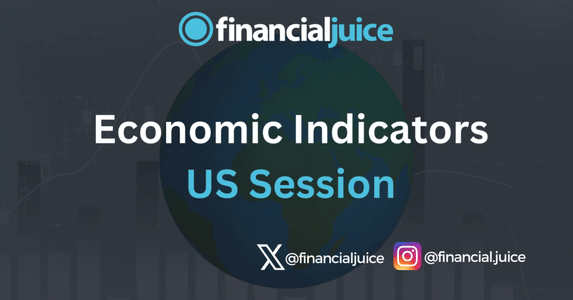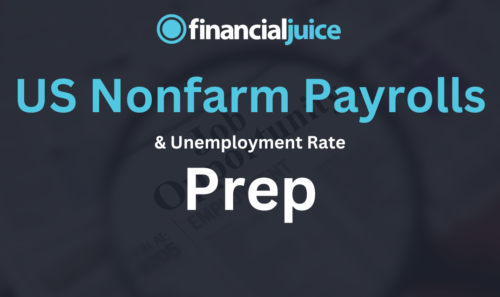
Week Ahead: Economic Indicators (US)
Tuesday 8th October
08:30 ET
US & Canadian Trade Balance
The Trade Balance is an economic indicator released that measures the difference between the value of the country’s exports and imports of goods and services.
A trade deficit occurs when imports exceed exports, while a trade surplus happens when exports exceed imports.
The trade balance is a key component of a country’s current account and reflects the demand for a country’s goods and services abroad as well as domestic demand for foreign goods.
It provides insights into the economic health and competitiveness in the global market and can influence exchange rates & GDP.
What to Expect
This number is unlikely to create a meaningful market reaction without a large deviation from expectations.
Having said that, a deeper than expected deficit (lower than expected number) could cause weakness across assets (dollar, stocks, and bond yields) due to its negative effect on GDP, and the opposite could be true if it comes in higher than expected.
Wednesday 9th
10:30 ET
EIA Crude Oil Inventories
US Weekly EIA Crude Oil Inventories
The US Weekly EIA Crude Oil Inventories report, released every Wednesday by the Energy Information Administration, details the amount of crude oil held in storage across the United States.
It provides insights into the supply and demand dynamics of the oil market.
What to Expect
An increase in inventories suggests higher supply or lower demand, potentially leading to lower oil prices. Conversely, a decrease indicates lower supply or higher demand, which can drive prices up.
14:00 ET
FOMC Meeting Minutes
The FOMC Meeting Minutes are detailed records of the discussions held during the Federal Open Market Committee meetings, where US monetary policy decisions are made.
Released three weeks after each meeting, the minutes provide insights into the economic outlook, considerations behind interest rate decisions, and the views of committee members on inflation, employment, and other economic factors. Investors, economists, and policymakers closely analyze the minutes to understand the Fed’s future policy direction and to gauge the potential impact on financial markets and the economy.
What to Expect
Any insights gained from this are not likely to be relevant to the recent volatility in the markets, as the FOMC did not have the data that sparked fears of a slowdown until after this meeting.
Having said that markets will still be attentive to comments from FOMC officials about their confidence on inflation return to target, as well as the employment situation.
Thursday 10th
08:30 ET
US CPI
The US Consumer Price Index is a monthly economic indicator published by the Bureau of Labor Statistics that measures the average change over time in prices paid by consumers for a basket of goods and services.
This basket includes categories such as food, housing, transportation, and medical care.
The CPI is a key indicator of inflation, reflecting changes in the cost of living and purchasing power.
Policymakers, economists, and investors closely monitor the CPI to make informed decisions regarding monetary policy, wage adjustments, and economic planning.
What to Expect
The markets seem to be shifting away from the “good news is bad news” and “bad news is good news” narrative, FOMC officials have still noted that they would like to see inflation come down to the 2% target.
A lower inflation rate would likely cause strength in US stocks and the dollar, as this would confirm that the Fed does not need to wait to cut rates and risk causing damage to the US economy by holding policy restrictive for too long, and the opposite could be true if it came in lower than expected.
Having said that, with market dynamics changing recently in the light of weak employment data and the urgency surrounding Fed rate cuts, any reactions to this could be volatile.
Still, the one thing markets don’t want at the moment is US rates having to stay higher for longer, risking causing further damage to the employment situation, so a reduction in inflation would be a welcome message for the markets.
US Initial & Continued Jobless Claims
US Weekly Initial & Continued Jobless Claims, reported by the Department of Labor every Thursday, track unemployment trends.
Initial jobless claims count people filing for unemployment benefits for the first time, indicating new job losses.
Continued jobless claims count those still receiving benefits after their initial claim, showing ongoing unemployment levels.
High numbers suggest a weakening job market, while low numbers indicate strength.
What to Expect
The US employment situation has been an area of focus recently, as its rapid cooling in the last Nonfarm payrolls report sparked rumors of a rapid economic slowdown, and the idea that the Fed may be too late in cutting rates to support the jobs market, which is one part of it’s mandate.
When it comes to employment, the markets seem to be acting as though “good news is good news” and “bad news is bad news”.
This means that a higher jobless claims number, indicating higher unemployment, would likely cause weakness in US stocks and the US dollar as well, as it confirms that the employment situation in the US is weakening, and imminent Fed action may be needed to stop a broader economic slowdown.
If it comes in lower than expected, this could indicate to the markets that perhaps there is not so much of a risk of a deep economic slowdown, which could cause strength in US stocks and the dollar.
Friday 11th
08:30 ET
US PPI
The US Producer Price Index is a monthly economic indicator published by the Bureau of Labor Statistics that measures the average change over time in selling prices received by domestic producers for their output.
It covers various sectors including manufacturing, agriculture, mining, and services.
The PPI is an important indicator of inflation at the wholesale level, reflecting price changes before they reach consumers.
Increases in the PPI can signal rising costs for businesses that may eventually be passed on to consumers, influencing consumer price inflation.
What to Expect
A lower inflation rate would likely cause strength in US stocks and the dollar, as this would confirm that the Fed does not need to wait to cut rates and risk causing damage to the US economy by holding policy restrictive for too long, and the opposite could be true if it came in lower than expected.
Having said that, with market dynamics changing recently in the light of weak employment data and the urgency surrounding Fed rate cuts, any reactions to this could be volatile.
Still, the one thing markets don’t want at the moment is US rates having to stay higher for longer, risking causing further damage to the employment situation, so a reduction in inflation would be a welcome message for the markets.
University of Michigan
Conducted by the University of Michigan, the UMich survey gauges consumers’ attitudes and expectations regarding personal finances, business conditions, and overall economic prospects.
The survey results are presented as an index, with higher values indicating greater consumer confidence.
In this report, respondents can also give their forecasts for 1-year and 5-10-year ahead inflation expectations, which the markets pay attention to.
What to Expect
When it comes to the headline sentiment read, a higher consumer sentiment number at the moment would be seen as bullish for US stocks and the dollar, as it indicates that the consumer is feeling good about the economic environment, which reduces the chances for a hard landing coming out of this Fed tightening cycle.
When it comes to inflation expectations, the markets will want to see these coming in lower than expected, which would increase confidence in the Fed’s ability to reduce rates and start to stimulate the areas of the economy that have shown weakness in recent weeks.
This would likely cause strength in US stocks.




